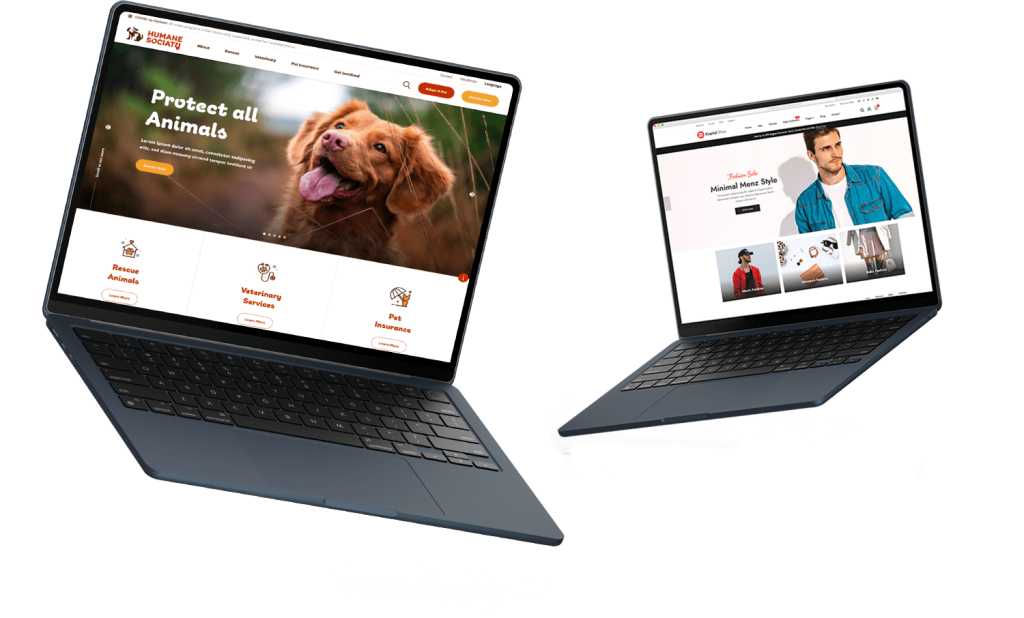Google Introduces Ads in AI Overviews: What It Means For Marketers
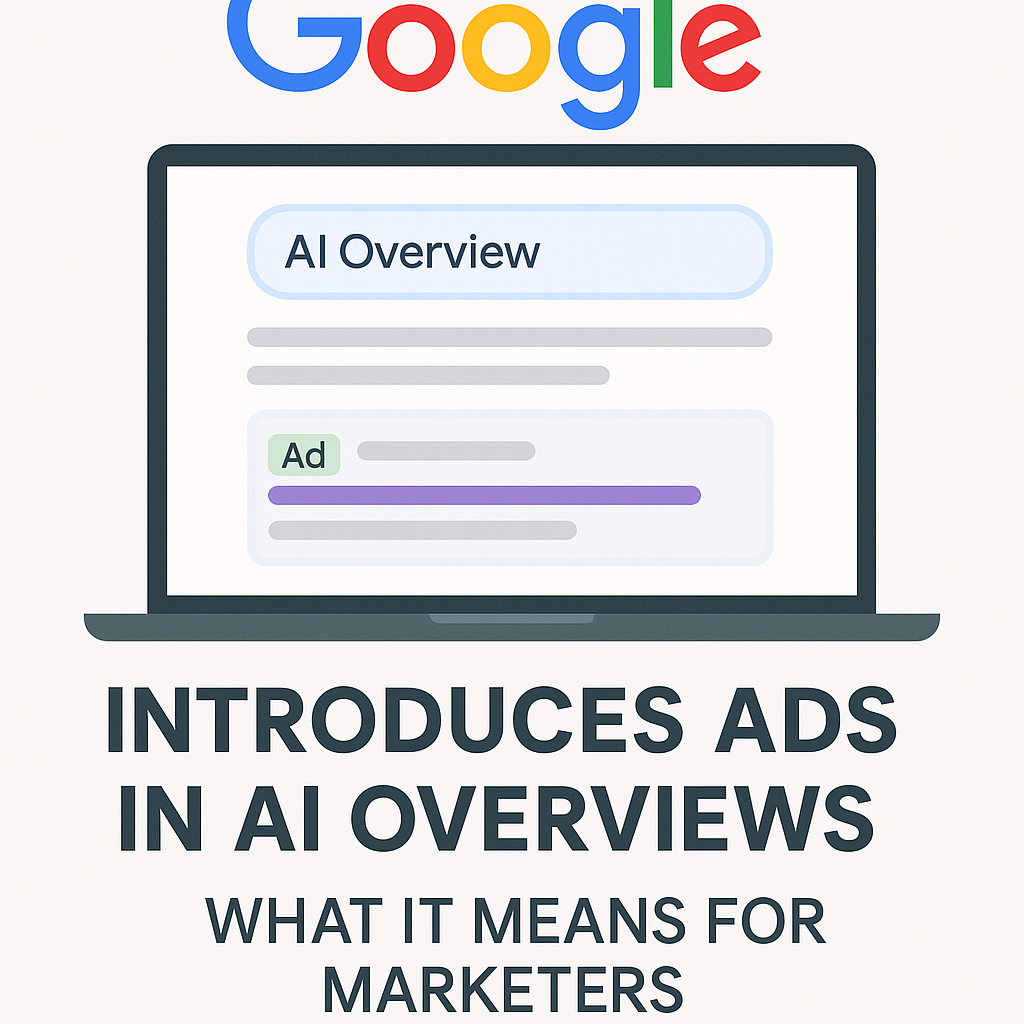
Google has once again disrupted the digital marketing landscape—this time by launching ads in AI Overviews. As artificial intelligence transforms search behavior, Google is evolving its monetization strategy to match user expectations and trends. The introduction of ads directly within AI-generated overviews signals a significant shift in how businesses must approach paid visibility online. For brands that rely on PPC advertising management, the implications are both promising and complex. Marketers must prepare for a future where AI-assisted search doesn’t just recommend content—it sells it. What Are Google’s AI Overviews? Google’s AI Overviews are summaries generated using large language models (LLMs) like Gemini (formerly Bard) that appear at the top of certain search results. They aim to deliver instant answers by synthesizing information from multiple sources—essentially preempting the need to click on traditional links. Now, Google has begun inserting Search and Shopping ads directly into these AI Overviews, initially for U.S. users and soon expanding to other English-speaking countries. Previously limited to mobile search, these ad placements are now being extended to desktop users and even into “AI Mode,” a new search interface optimized for conversational interaction. What Does This Mean for Marketers? This move adds a new, prominent layer of ad real estate in search. It also means your brand’s visibility within search results now competes not only with SEO-optimized content but with AI-curated content that can include paid placements within the overview itself. For businesses already investing in SEO optimization services and paid social media advertising, the game has changed. The traditional hierarchy of organic listings → paid ads, → featured snippets is evolving into a dynamic and AI-driven interface where contextual relevance and intent drive visibility. Who’s Eligible for These New Ad Placements? Google’s initial rollout supports advertisers using: That means if you’re using Google Ads with these campaign types, your ads may already be eligible to appear in AI Overviews—without requiring any additional setup. However, to fully capitalize on this visibility, your ad content, keywords, and creative approach must adapt to AI’s evolving context requirements. How Are These Ads Displayed? In a traditional search, ads are usually placed above or below organic results. In AI Overviews, ads are embedded within the actual answer—appearing alongside links and sources provided by the AI. Importantly, these ads are: This contextual approach may lead to higher engagement, as ads blend naturally into informative answers. Opportunities and Challenges Ahead ✔ Opportunity: Enhanced Visibility Where Users Are Focused AI Overviews are designed to capture immediate attention. By inserting ads directly into that space, Google is giving advertisers access to one of the most concentrated areas of user focus. For marketers with strong brand strategy consulting, this offers a unique way to ensure your messaging appears in the “zero-click” zone—before users even scroll. ✔ Opportunity: Relevance-Driven Conversions Unlike traditional ads that depend on visual dominance, AI Overview ads benefit from being contextually embedded within helpful content. This means higher engagement potential—especially for product-based or solution-driven queries. If a user searches, “What’s the best air purifier for allergies?” and the AI suggests your product, that placement can be reinforced with a targeted ad—driving conversions from an already-warm lead. ⚠ Challenge: Ad Saturation and User Fatigue With the increasing number of ad placements across the SERP—now including inside AI answers—users may begin to experience ad fatigue. This could lead to: Balancing precision targeting with value-driven messaging will be essential to maintaining engagement. Preparing for AI-Enhanced Advertising As a marketer, how can you adjust your strategy for success in this AI-powered ad environment? 1. Audit Your Existing Campaigns Start by reviewing your use of: Are they optimized for intent and performance? If not, this is a good time to conduct a comprehensive audit in collaboration with your PPC advertising management team. 2. Optimize for Conversational Relevance AI Overviews are generated to feel natural and conversational. Your ad copy should match this tone. Try: “Looking for allergy relief? Discover HEPA air purifiers starting at $99.” Avoid: “HEPA AIR PURIFIER – BUY NOW – 50% OFF!” The goal is to enhance, not disrupt, the user’s experience. 3. Monitor Your Campaign Metrics Track: These metrics can indicate whether your ads are resonating in AI Overviews versus traditional placements. Beyond Ads: A New Era of Search Behavior Google’s AI ad rollout also reflects a broader shift in how people search. Increasingly, users expect: To meet these expectations, your marketing strategy should combine: In short, it’s not just about ranking anymore—it’s about being the best answer in the right format, at the right time, powered by AI. Final Thoughts: A Call for Agility Google’s decision to introduce ads in AI Overviews is not a minor adjustment—it’s a redefinition of the search experience. For marketers, it’s a wake-up call to embrace agility, innovation, and AI fluency. At Speed Dot 360, we understand how fast this landscape moves. That’s why we provide integrated strategies that combine PPC advertising management, AI-readiness, SEO optimization, and brand strategy consulting to help businesses not only adapt—but lead. Whether you’re looking to dominate in AI search, revamp your ads for conversational platforms, or future-proof your paid media, we’re ready to help you rise to the occasion.
How Can Google Ads Help You Achieve & Advance Your Business Goals?
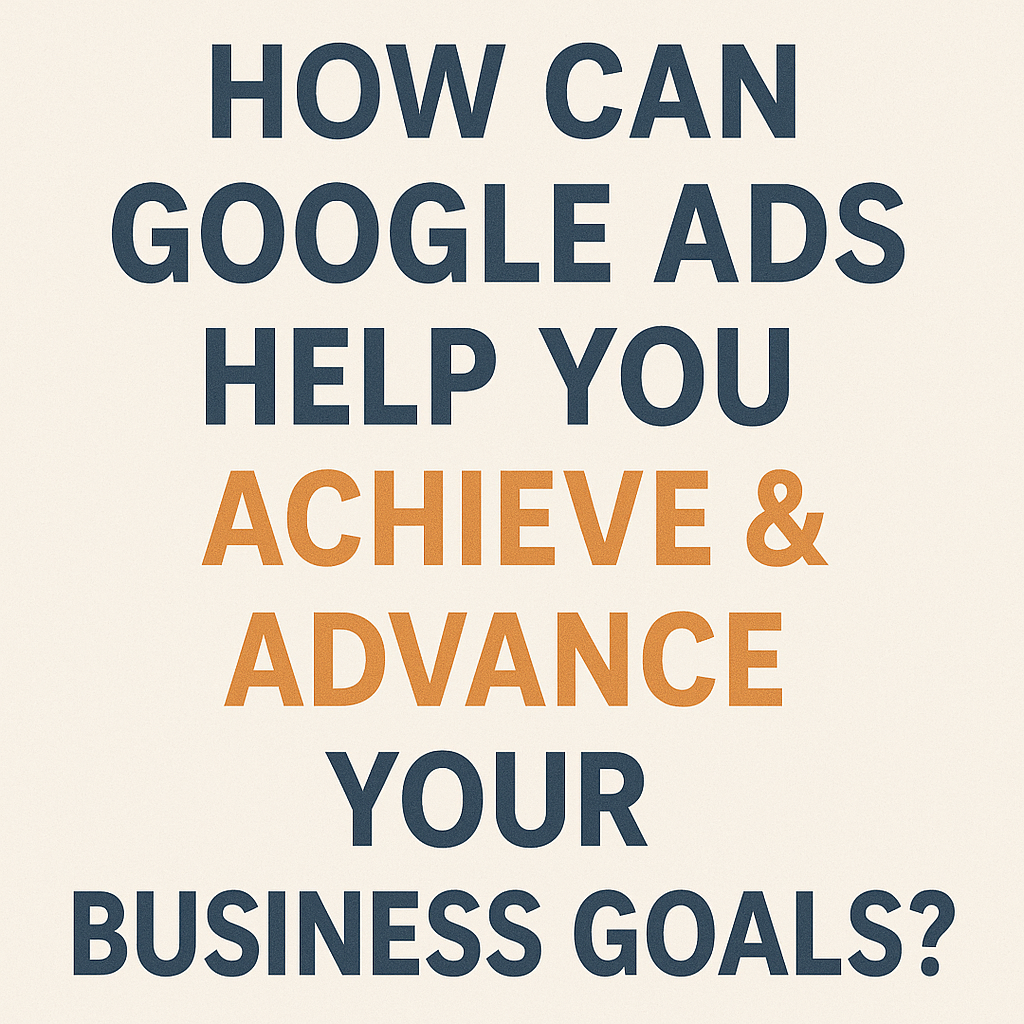
In today’s competitive digital landscape, having a robust online presence isn’t an option anymore; rather, it has become a necessary way for us. One of the most effective tools for driving visibility, conversions, and business growth is Google Ads. This dynamic platform enables businesses to reach their target audience through highly customized campaigns. Whether you’re a startup or an established enterprise, leveraging PPC advertising management via Google Ads can propel you toward your strategic business goals. What Is Google Ads and Why Is It So Powerful? Google Ads is Google’s pay-per-click (PPC) advertising platform, enabling businesses to exhibit ads on Google Search, YouTube, and across the vast Google Display Network. Unlike traditional marketing, where results are often hard to track, Google Ads provides measurable insights, helping you see what works—and what doesn’t—in real-time. What makes Google Ads truly powerful is its aptitude to target people who are actively searching for your products or services. That means your business gets visibility at the exact moment potential customers are showing interest. 1. Aligning Google Ads With Your Business Goals Before launching any campaign, the key is to define clear business objectives. Whether it’s increasing website traffic, capturing leads, boosting online sales, or growing brand awareness, Google Ads provides dedicated campaign types for each goal. By choosing the right campaign type, your ads become goal-oriented from the start. 2. Reaching the Right Audience With Laser Precision Unlike mass advertising, Google Ads lets you target users based on location, interests, demographics, device types, and even their previous behavior online. This keeps you assured that your marketing budget is used effectively by focusing on audiences most likely to convert. Additionally, with advanced keyword research services, you can discover and bid on the exact terms your potential customers are using in search. This targeted approach helps you show up for high-intent queries and minimizes wasted ad spend. 3. Enhancing Lead Generation and Sales Whether you want to generate leads through form submission or drive direct eCommerce sales, Google Ads makes it possible with features like conversion tracking and smart bidding. By comprehending how users interact with your ads, Google Ads optimizes delivery to those most likely to take action. This capability becomes even more effective when integrated with paid social media advertising strategies, allowing you to retarget users across platforms like Facebook and Instagram, keeping your brand top-of-mind throughout the buyer journey. 4. Measurable ROI: A Marketer’s Dream One of the strongest reasons to invest in Google Ads is the wealth of analytics it offers. You can track impressions, clicks, conversions, and cost per acquisition (CPA), allowing for real-time performance tuning. For businesses focused on ROI, this is invaluable. You know exactly how much each lead or sale costs you, and you can make quick adjustments if a campaign underperforms. In combination with social media strategy development, you can build comprehensive marketing funnels that nurture leads through multiple touchpoints before conversion. 5. Building Brand Awareness at Scale Even if your current goal isn’t direct sales, brand awareness is crucial. Display ads and video ads are excellent for building recognition and trust with your audience. These ads appear while users are browsing their favorite websites or watching YouTube, introducing them to your brand in an unobtrusive but impactful way. This is especially helpful for new businesses or product launches. Over time, consistent visibility creates brand familiarity, increasing the likelihood of conversion when the customer is ready. 6. Leveraging Google’s Automation and AI Google Ads provides several tools powered by artificial intelligence to help advertisers maximize performance: These features not only improve efficiency but also help even small businesses compete with larger players by maximizing limited ad budgets. 7. Seamless Integration With Other Platforms One of the underrated strengths of Google Ads is how well it integrates with other tools, including Google Tag Manager, Google Analytics, and CRMs. This makes tracking user behavior and retargeting much more effective. Also, if you’re running Facebook ad campaigns, Instagram marketing services, or LinkedIn advertising solutions, you can align your targeting and messaging for a unified cross-platform strategy. This level of integration ensures your entire digital ecosystem works in harmony, improving both results and user experience. 8. Immediate Results With Long-Term Impact SEO is a long-term investment, but Google Ads offers immediate visibility. If your website is new or hasn’t yet ranked in search engines, Ads can put you in front of customers today. However, the value doesn’t stop at instant results. Over time, you can use the data from Google Ads campaigns to refine other areas of your marketing—such as website design, content strategy, and SEO. This combination of quick wins and long-term insights makes Google Ads a cornerstone of any performance-based marketing plan. Final Thoughts In summary, Google Ads is not just an advertising tool—it’s a strategic weapon that aligns directly with your business goals. Whether you’re focused on awareness, leads, sales, or brand engagement, Google Ads provides the tools, data, and automation needed to make it happen. When paired with a strong marketing strategy and expert PPC advertising management, Google Ads can deliver exceptional results—especially when synchronized with other platforms like Facebook, Instagram, and LinkedIn. It’s time to stop guessing and start targeting. With Google Ads, every click brings you closer to your goals.
Is it Worth It? How to Evaluate the Success of Your Website Redesign
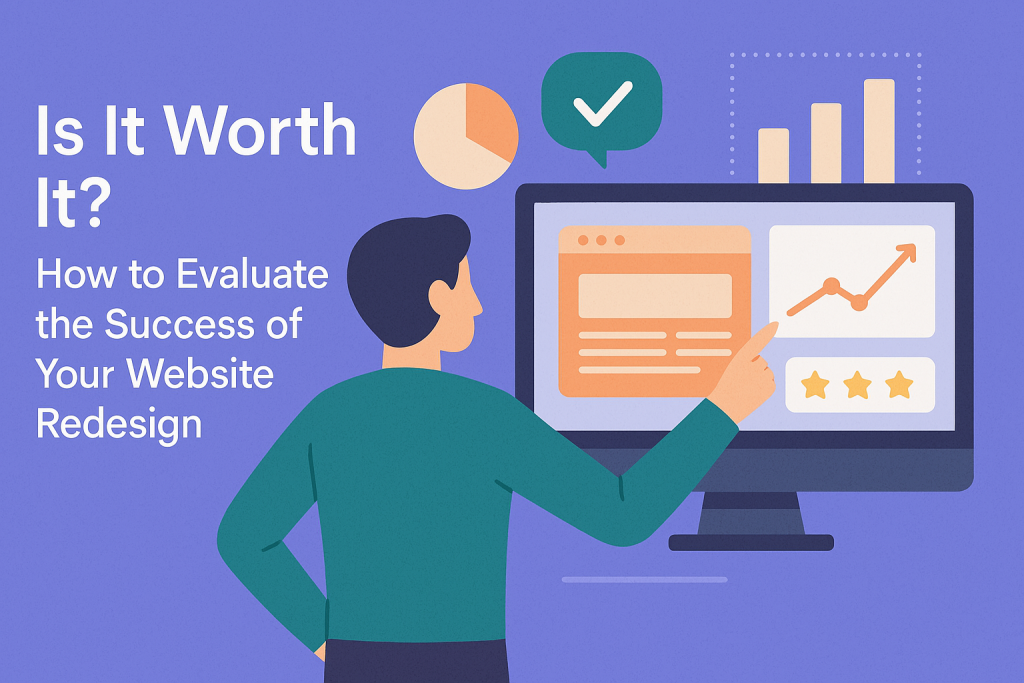
You’ve invested time, energy, and capital into website redesign services, maybe even revamped your brand entirely. But now that your new site is live—what’s next? Was the investment worth it? A website redesign is more than a visual facelift. It’s a strategic move aimed at boosting performance, enhancing user experience, and increasing conversions. However, to ensure you’ve actually moved the needle, you must measure success through clear, actionable KPIs. In this blog, we’ll explore the most effective ways to evaluate your redesign and determine whether it delivered true ROI—or just pretty pixels. 1. Set Clear Goals Before You Launch The first step to evaluating success is knowing what you’re measuring against. Every redesign should be aligned with specific business objectives. Common Goals Include: If your redesign didn’t begin with goal-setting, start now by defining what “success” looks like for your brand. 2. User Experience Metrics: Are Visitors Enjoying the New Design? User Experience (UX) is at the forefront of every effective redesign. Good design guides users toward actions—great design makes those actions frictionless. Key UX KPIs: If these metrics improved, then your custom web development and UX decisions are paying off. 3. Conversion Rates: Is the New Design Driving Action? The primary goal for most websites is to convert visitors—whether that means purchases, sign-ups, downloads, or form submissions. Comparing pre- and post-redesign conversion rates is critical. Metrics to Watch: Tip: Use A/B testing tools like Google Optimize to experiment with CTA placements, layouts, and messaging post-redesign. 4. SEO Performance: Did Your Rankings Survive the Makeover? A poorly executed redesign can sabotage search engine visibility. A well-executed one will maintain or even enhance it. SEO Metrics to Evaluate: Working with a developer skilled in responsive website design ensures mobile-first optimization, which is now critical for Google rankings. 5. Mobile Responsiveness: Is It Truly Mobile-First? With more than half of global traffic coming from mobile, your redesign must excel on smartphones and tablets. Test With: If mobile bounce rates have dropped and engagement has increased, your responsive website design is doing its job. 6. Website Speed: Faster = Better Speed kills—especially slow websites. Site performance plays a major role in both UX and SEO. Use Tools Like: Improve By: If your bounce rate is dropping and conversion rate is rising, performance upgrades from your website redesign services are likely a key factor. 7. Heatmaps and Session Recordings: Watch Real Users in Action Numbers are valuable, but behavioral tools offer goldmines of insight. Tools to Use: Watch how users navigate, where they get stuck, and where they click. These qualitative insights validate your redesign decisions—or highlight where tweaks are needed. 8. Accessibility Improvements: Inclusive Design = Better Results Designing for accessibility not only expands your audience—it often leads to better UX for everyone. Evaluate: Accessibility improvements can indirectly impact bounce rate, engagement, and conversion rates—especially on forms and navigation menus. 9. Technical Health: Is Your Backend Built to Last? A polished front end needs a robust back end. Quality custom web development ensures fast load times, fewer errors, and a smoother user journey. Key Checks: If your site is throwing fewer errors and your time-to-first-byte (TTFB) is faster, the backend overhaul was a win. 10. ROI: The Ultimate Success Indicator All your metrics feed into one final judgment: return on investment. Did the money you spent on redesign actually increase revenue or leads? Formula:ROI = (Net Profit from Redesign – Cost of Redesign) / Cost of Redesign x 100 Track long-term benefits like: A high ROI means your website redesign services investment was absolutely worth it. 11. Stakeholder and Customer Feedback: Gut-Checks Matter Too Don’t ignore qualitative feedback. What do customers, clients, and internal teams say about the new design? Collect Feedback From: Sometimes the clearest signals of success come from the people actually using your site. Measure What Matters, Then Iterate The only way to know if your redesign was “worth it” is by measuring real results. Evaluate success based on a mix of hard data and human feedback. Look beyond the aesthetics and dive deep into UX, SEO, performance, and ROI. At SpeedDot360, our website redesign services, responsive website design, and custom web development ensure your digital investment pays dividends. We don’t just design websites—we build platforms that drive growth.
How Much Do Ads Cost in 2025?
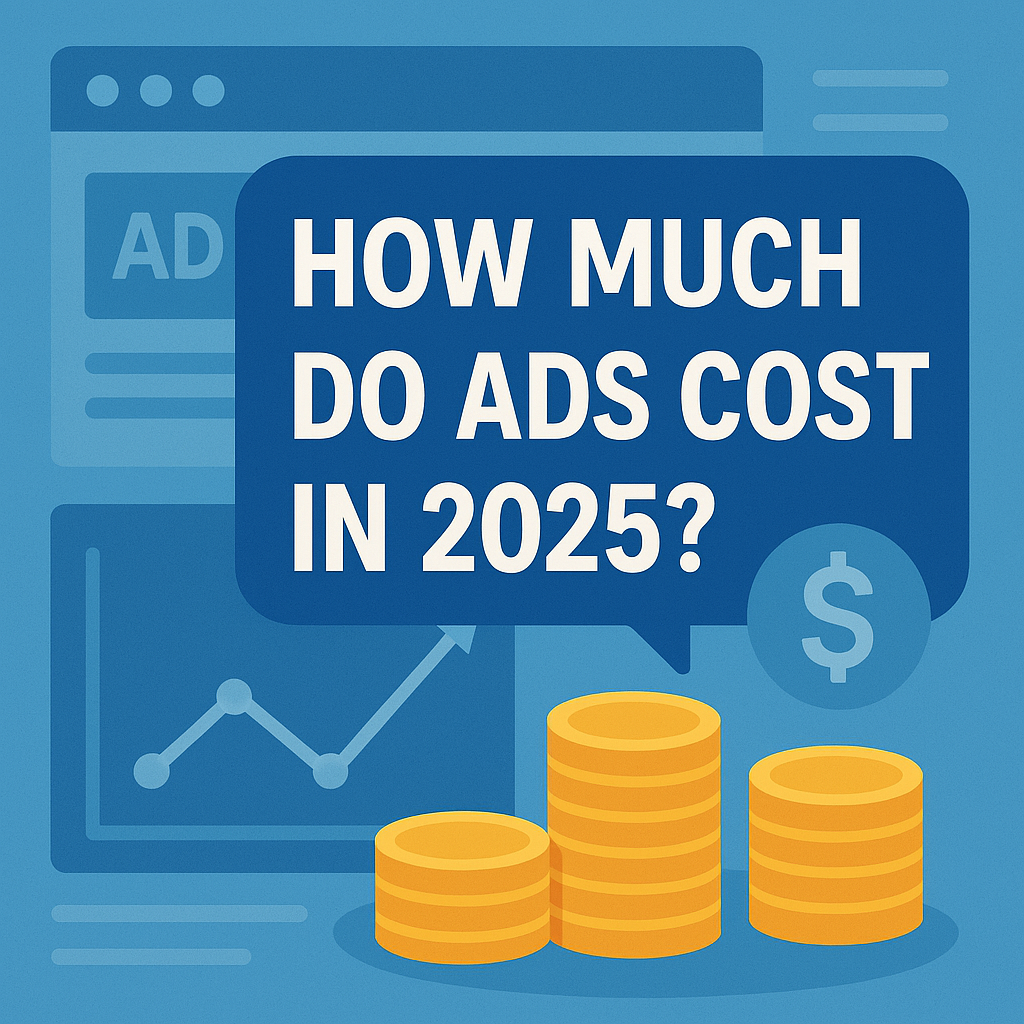
In the flustering world of inflation, businesses can oversee a considerable difference in online advertisement, and as 2025 unfolds, businesses must adapt to new pricing models, trends, and bidding strategies. Whether you’re running PPC advertising management, leveraging social media management, or investing in Facebook ad campaigns, understanding ad costs is crucial for maximizing returns. But how much does advertising actually cost in 2025? Are prices going up, or are there ways to optimize spending? In this article, we’ll break down the latest ad pricing trends across different platforms, analyze the key factors driving these costs, and offer insights on how businesses can effectively allocate their marketing budgets. The Evolution of Digital Advertising Costs The cost of advertising is never static. It fluctuates due to platform competition, consumer behavior, economic conditions, and even technological advancements. Here’s what’s shaping ad prices in 2025: These factors create a complex pricing environment where advertisers must be strategic with their spending. Google Ads Costs in 2025 Google remains the largest digital advertising platform, but costs vary based on industry, competition, and ad format. What Influences Google Ads Pricing? To control expenses, businesses should work with a content marketing agency to improve landing page relevance and Quality Scores. Facebook & Instagram Ads Costs in 2025 Meta’s platforms (Facebook & Instagram) remain essential for digital marketing, with costs rising due to increased competition and evolving targeting options. Key Pricing Factors for Facebook Ads: Advertisers investing in Facebook ad campaigns should prioritize creative testing and audience segmentation to improve ROI. LinkedIn Ad Costs in 2025 For B2B businesses, LinkedIn is a go-to platform, but it remains one of the most expensive advertising options. Given LinkedIn’s higher costs, B2B companies should focus on email marketing campaigns and retargeting strategies to complement LinkedIn ads and reduce spending. TikTok & YouTube Ad Costs in 2025 Video-based platforms continue to dominate digital advertising. TikTok Ads YouTube Ads Short-form videos outperform static ads, making social media management critical for brands looking to boost engagement and ad efficiency. Email Advertising Costs in 2025 While many businesses overlook email marketing, it remains a highly profitable channel. Email marketing campaigns provide an affordable way to nurture leads and drive conversions without relying on expensive paid ads. What Drives Advertising Costs in 2025? Several key factors influence digital advertising expenses: 1. Industry Competition Certain industries (e.g., legal, finance, SaaS) see higher CPCs due to fierce competition. 2. Bidding Strategies Automated bidding increases efficiency but can also drive up costs if not monitored. 3. Ad Relevance & Quality A strong Quality Score (Google) or Relevance Score (Facebook) can lower costs significantly. 4. Audience Targeting Narrower targeting typically increases costs but improves conversion rates. 5. Ad Format & Placement By combining keyword research services with data-driven strategies, brands can optimize ad performance and spending. How to Lower Your Ad Costs in 2025 Want to make the most of your advertising budget? Here are some proven strategies: The Future of Ad Pricing Beyond 2025 As AI-driven ad platforms evolve, costs will continue to shift. Key trends to watch: Advertisers who adapt to these trends will be better positioned for cost-effective success. Conclusion Advertising costs in 2025 will continue to rise, but businesses that optimize their strategies can still achieve strong ROI. By staying informed and leveraging data-driven insights, brands can allocate their budgets efficiently and maximize their advertising impact in 2025.




